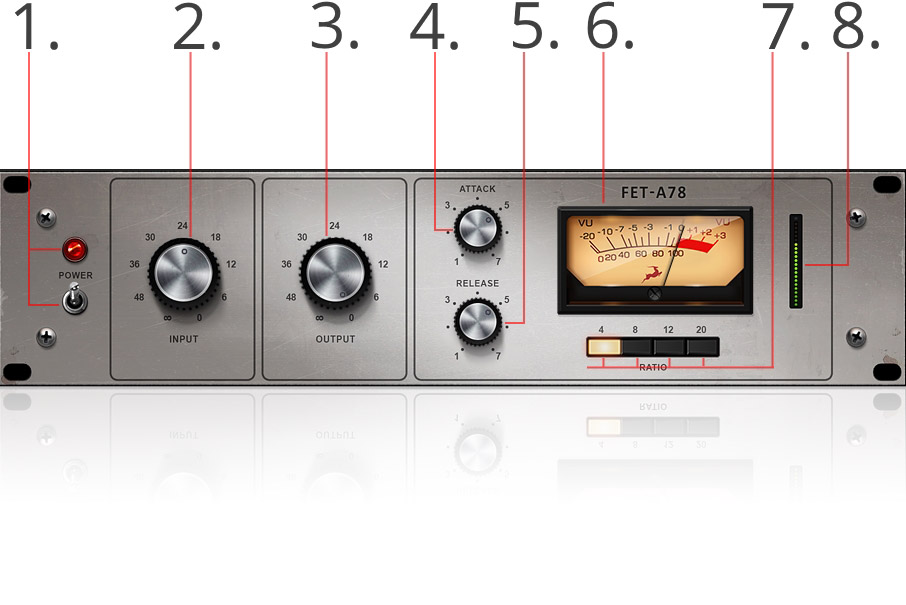Using the FET-A78 on full mixes as a limiter
⦁ When using the FET-A78 as a limiter, its effect is made most apparent on full mixes. As always, it is important to dial in the appropriate Attack and Release times for optimal results.
⦁ For live recordings, use a slower attack time to maintain a high average level.
⦁ For material with relatively little low frequency content, use a fast release time to increase the short interval average level. The highest apparent average level may be achieved with the shortest release time before overt “pumping” occurs.
⦁ For material with above average low frequency content, the release time should be increased until no low frequency distortion is apparent. Another option is slightly reducing the amount of limiting in favor of slightly faster release time — obtaining a higher average level as a result.
⦁ Adjusting the Attack time also affects the amount of sibilance. Be careful with extremely slow attack times, they may result in full gain being applied to the sibilants and reduced gain to the vowels, ending up with exaggerated sibilants as a result.
⦁ You are encouraged to experiment until you find appropriate settings that work for your material.

